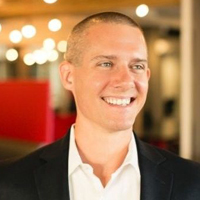There’s this common theme that goes along with being human. We mess up. It’s expected. Even though it stings when it happens, it’s an essential part of the human condition.
At some point in your life, as a consumer, something will not go as you expected. Getting billed the wrong amount, a product or size mix up, a flight delay, these are all unfortunate events and even though we KNOW something will go wrong, we can get really mad, upset, disappointed about these mishaps.
It’s strange paradox that we can all relate to. What’s interesting though, is after the shock of being on the wrong end of a customer service fail, we can be surprisingly quick to forgive – if it’s made right and we feel heard in our frustration. In fact, this phenomenon has a name. According to marketing professors Michael McCollough and Sundar Bharadwaj it’s called the service recovery paradox. The service recovery paradox is the result of a very positive service recovery, causing a level of customer satisfaction and/or customer loyalty even greater than that expected if no service failure had happened.
Basically, these professors are saying that when we experience a customer service fail, if we feel the company made the issue right, we have a higher level of satisfaction than if the original experience was flawless to start or if no issue occurred.
Knowing this, it’s important for brands to understand the value of social customer service. Why?
Well, aside from being available to customers in their preferred channels, answering complaints via social networks adds a wow factor that leave customers delighted thereby giving the service delivery paradox an opportunity to work for your brand.
Consider this scenario:
Sarah just got a package from her favorite clothing retailer, but the size of the dress she ordered is wrong. Oh, and she needs this dress for an event tomorrow, making the whole situation doubly frustrating. Sarah’s rather disappointed and takes to Twitter to vent.
A customer service agent from the clothing store sees the tweet and reaches out to Sarah, apologizes for the inconvenience and, after getting some basic info, finds 4 stores that carry the dress in the right size. As a bonus, the agent is able to schedule the dress next day delivery. Sarah wasn’t expecting any of this, and now feels even more loyalty towards this brand and is not hesitant to tell her social network about the experience.
Sarah may have been planning on calling in her issue, or she may have just sent it back and worn something she already had in her closet. Either way, had the brand not been listening on social media, both Sarah and the clothing retailer would have missed out. This type of helpful service was completely unexpected and made Sarah a customer for life, while showcasing some great customer service on the part of the company.
Where is your organization with the social media customer service? Have questions about getting up and running? Reach out for a demo to see how NICE CXone can help you integrate social customer care into your organization.
Matt Wilbanks is CEO and Co-Founder of HelpSocial, the world’s first social management platform built to scale social media throughout a contact center.




